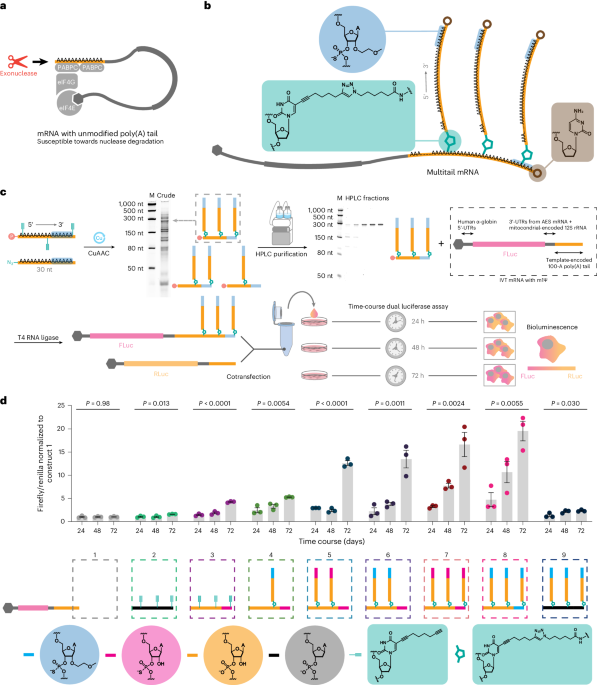[ad_1]
:focal(800x602:801x603)/https://tf-cmsv2-smithsonianmag-media.s3.amazonaws.com/filer_public/3a/fb/3afb3353-3a1b-4314-a0ee-93d37a1d9b66/gettyimages-1246951746_web.jpg)
An elephant seal pup on South Georgia Island
Wolfgang Kaehler / LightRocket via Getty Images
Among the marine mammals swimming through our planet’s seas, whales often steal the evolutionary spotlight. A stunning array of fossils demonstrate how whales evolved from hoofed mammals that adapted to life in the water around 45 million years ago. And yet whales are not the only marine mammals whose ancestors had their origins on dry land. The ancestors and relatives of seals and sea lions, called pinnipeds, also took the plunge in the deep past. Paleontologists are still piecing together how otter-like creatures related to bears evolved into these amphibious marine mammals.
The fossil tale of the pinnipeds is not nearly as old as that of whales. The oldest seal relative paleontologists have uncovered dates to about 24 million years ago. Throughout their entire history, pinnipeds have been tied to the land, at least in some way. Seals, sea lions and walruses of every era still piled onto beaches to rest, reproduce and escape predators—from carnivorous walrus relatives of ages past to the elephant seals that shore up along the California coast each winter. The story of these beasts is not one of ever-increasing adaptation to a life spent at sea, like whales, but of mammals that thrive along the margin of the water and the beach.
Finding and uncovering fossil pinnipeds in the first place is a challenging task. “Some creatures are more likely to enter the fossil record than others,” says University of California, Santa Cruz, paleontologist Ana Valenzuela Toro, “and pinnipeds have an unusual amphibious lifestyle that exposes them to very different processes depending on where they die.” A prehistoric seal that lived along an ancient shore where waves, scavengers and other processes break down a body was much less likely to be preserved in the fossil record than a marine mammal that perished offshore and sank to a relatively calm sea bottom where it could be buried. Despite such complications, paleontologists have uncovered a variety of prehistoric pinnipeds that stretch what we might envision when we think of seals and their relatives.
The earliest pinnipeds, University of Wisconsin-Oshkosh paleontologist Morgan Churchill says, probably looked very much like ancient weasels and bears. Seal forerunners would have to be identified on the basis of subtle anatomical traits and not necessarily the aquatic specializations we associate with them today. “It would not surprise me at all if some of these proto-pinnipeds were sitting in museum cabinets already, mislabeled as land-dwelling weasel relatives,” Churchill says.
While experts await such finds, paleontologists have already uncovered at least one example of a mammal that helps outline what seal ancestors were like, Puijila darwini. Found in 2007 among the remains of an ancient lake on Nunavut’s Devon Island, the mammal’s bones indicate that it had webbed feet and used its limbs, rather than its tail and spine, to move through the water. Pinnipeds swim by pushing themselves through the water with highly modified arms and legs instead of undulating their backbones as whales and otters do, making Puijila a skeletal snapshot of what the earliest pinnipeds were like.
An artist’s restoration of Puijila darwini/https://tf-cmsv2-smithsonianmag-media.s3.amazonaws.com/filer_public/35/1d/351d5003-6cae-4840-aa30-07206dbfac3b/puijila_bw_web.jpg)
Up until recently, experts entertained the possibility that today’s array of seals, sea lions and walruses originated from two different ancestral lineages, says Canadian Museum of Nature paleontologist Natalia Rybczynski. The discovery of Puijila and some recent genetic studies, however, indicate that all pinnipeds truly did share one common ancestor. More than that, the genes of pinnipeds hint that the mammals originated many millions of years earlier than Puijila and likely lived in freshwater or nearshore environments. Just as the earliest whales lived on land and had feet tipped with hooves, the earliest pinnipeds were likely land-dwelling animals that took millions of years to begin becoming adapted to life in the water.
Rather than being a direct pinniped ancestor, then, Puijila likely represents the form of earlier pinniped forerunners. Today’s seals and sea lions are not direct descendants of Puijila, but the otter-like mammal represents what pinniped ancestors were like at one point in the distant past. Paleontologists know this because rock layers of about the same age—about 24 million years old—as Puijila contain the remains of the early pinniped Enaliarctos. The mammal still had some ancient traits, such as shear-like cheek teeth for cutting rather than gripping fish, but if you were to see one swimming along the Oregon coast you’d still recognize it a sea lion-like beast. The pinniped’s anatomy demonstrates that 21 million years after whales started sliding into the seas, pinnipeds began to do the same.
Various pinniped species thrived through the millions of years following Enaliarctos, and some were quite different from their living relatives. Between 10 million and 15 million years ago, for example, a large pinniped called Allodesmus swam the breadth of the Pacific between Japan and California. It was stocky and elongated, the mammal’s large eyes hinting that these pinnipeds were like ancient elephant seals that dove deep in search of fish and squid.
While many fossils of seals and sea lions look similar to modern species, the fossilized walruses were among the strangest. Pelagiarctos, which also lived off California around the same time, was a walrus that had large sharp teeth. The walrus likely fed on a little bit of everything, but it is one of the few pinnipeds that would have been capable of munching on large prey. Another walrus relative that lived along the ancient California coast about seven million years ago, Gomphotaria, ate shellfish like its modern cousin but used its huge teeth to grasp and hammer its meals open before eating the soft parts inside. Churchill’s favorite, however, is a fossilized walrus called Pontolis magnus from Oregon. “While it didn’t have the impressive tusks we see in the modern walrus, it was far larger,” Churchill says, “rivaling elephants in size, and it may have preyed upon other pinnipeds.”
An artist’s restoration of Gomphotaria pugnax/https://tf-cmsv2-smithsonianmag-media.s3.amazonaws.com/filer_public/89/67/89675f3b-b69c-4f77-a875-7f081ad7cdd6/gomphotaria_pugnax_life_restoration_web.jpg)
Pinnipeds started in the ancient Arctic and spread through Earth’s seas over millions of years and now include at least 34 species from pole to pole. But despite the fact that many pinniped species spend weeks to months out at sea in search of food, every species is still tied to the land to reproduce and raise its offspring. The timing of when pinnipeds evolved might have contributed to their ecological attachment to the shoreline.
When whales evolved, Churchill points out, the oceans were not as productive and full of fishy prey as in more recent times. Early whales may have become better suited to the water because they had to travel farther to find enough food. When pinnipeds evolved, by contrast, oceans had more food to offer. On top of that, being able to escape onto land is a handy way to evade predators that were already present in the seas when pinnipeds evolved. Toothy, carnivorous whales and large sharks swam in the same waters, both of which considered blubbery pinnipeds prey. With abundant food offshore and the ability to escape predators onto land, pinnipeds found an evolutionary sweet spot. Even today, Churchill notes, “pinniped diversity is heavily tied to regions of upwelling and high productivity.”
Major evolutionary shifts are often presented as times of increasing adaptation to a new way of living. Birds’ origin story centrally involves their ability to fly, and whales sliding into the seas have become iconic examples of evolutionary transformation. Just because pinnipeds have gained a suite of adaptations to life in the water doesn’t mean that the mammals are on an evolutionary course to become whale-like, however, or that adaptation always leads to extremes. “Whales and pinnipeds are just two different ways of living in the ocean,” Valenzuela Toro says. Pinnipeds found a way of living that works very well for them, swishing through the water and sunning their blubbery bodies on the beach.
Maqvi News #Maqvi #Maqvinews #Maqvi_news #Maqvi#News #info@maqvi.com
[ad_2]
Source link





































/https%3A%2F%2Ftf-cmsv2-smithsonianmag-media.s3.amazonaws.com%2Ffiler_public%2F3a%2Ffb%2F3afb3353-3a1b-4314-a0ee-93d37a1d9b66%2Fgettyimages-1246951746_web.jpg)











